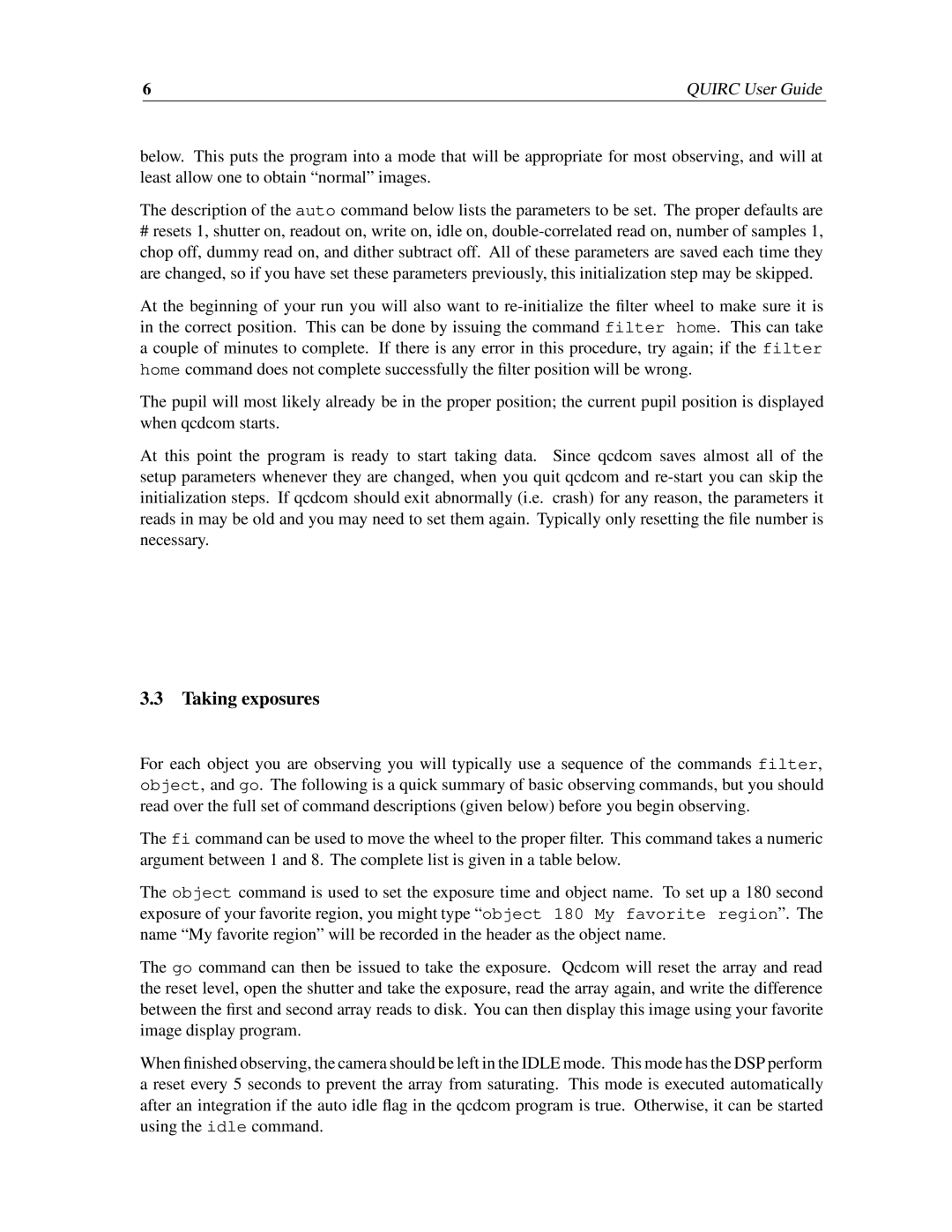6 | QUIRC User Guide |
below. This puts the program into a mode that will be appropriate for most observing, and will at least allow one to obtain “normal” images.
The description of the auto command below lists the parameters to be set. The proper defaults are
#resets 1, shutter on, readout on, write on, idle on,
At the beginning of your run you will also want to
The pupil will most likely already be in the proper position; the current pupil position is displayed when qcdcom starts.
At this point the program is ready to start taking data. Since qcdcom saves almost all of the setup parameters whenever they are changed, when you quit qcdcom and
3.3Taking exposures
For each object you are observing you will typically use a sequence of the commands filter, object, and go. The following is a quick summary of basic observing commands, but you should read over the full set of command descriptions (given below) before you begin observing.
The fi command can be used to move the wheel to the proper filter. This command takes a numeric argument between 1 and 8. The complete list is given in a table below.
The object command is used to set the exposure time and object name. To set up a 180 second exposure of your favorite region, you might type “object 180 My favorite region”. The name “My favorite region” will be recorded in the header as the object name.
The go command can then be issued to take the exposure. Qcdcom will reset the array and read the reset level, open the shutter and take the exposure, read the array again, and write the difference between the first and second array reads to disk. You can then display this image using your favorite image display program.
When finished observing, the camera should be left in the IDLE mode. This mode has the DSP perform a reset every 5 seconds to prevent the array from saturating. This mode is executed automatically after an integration if the auto idle flag in the qcdcom program is true. Otherwise, it can be started using the idle command.
